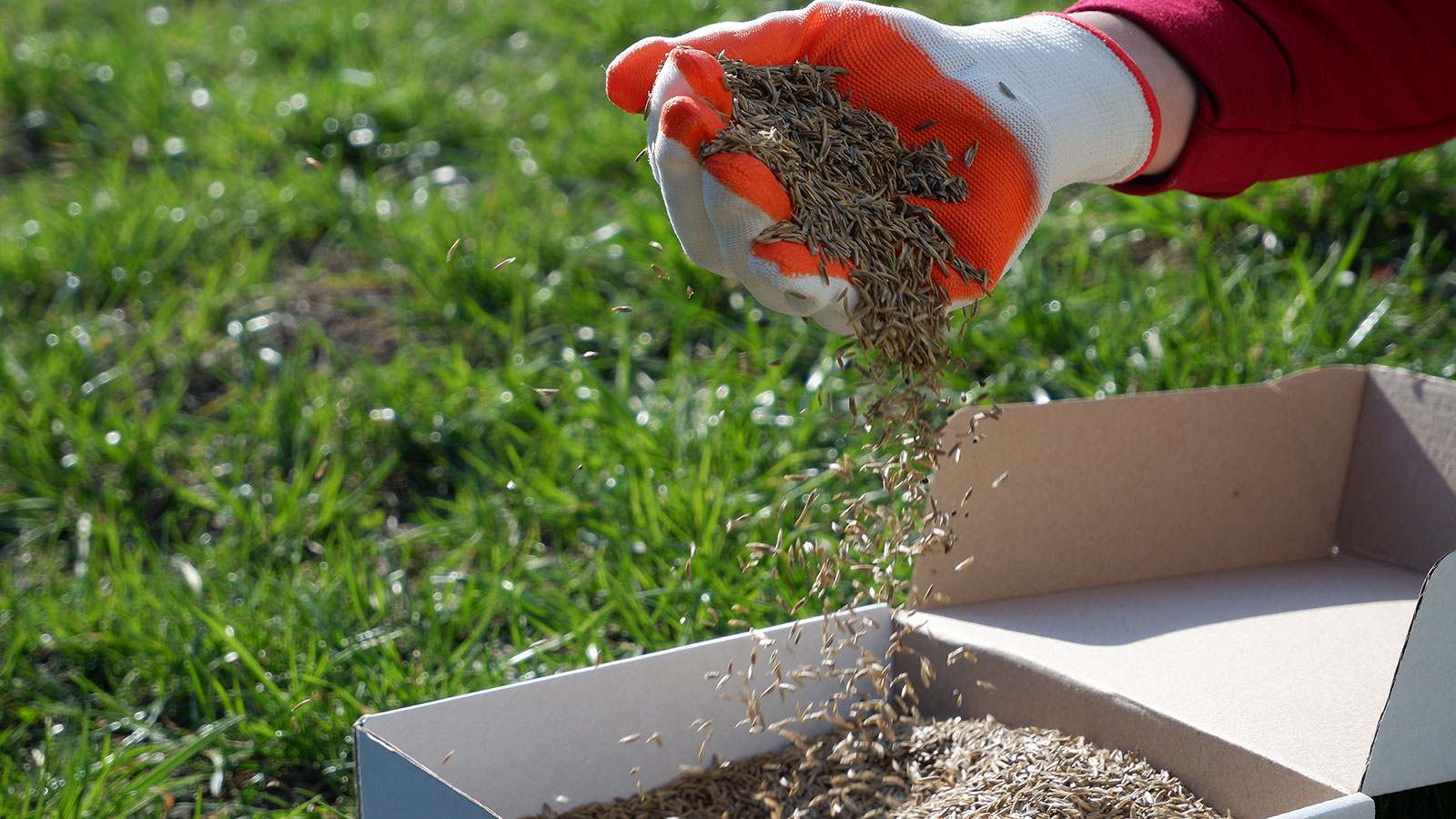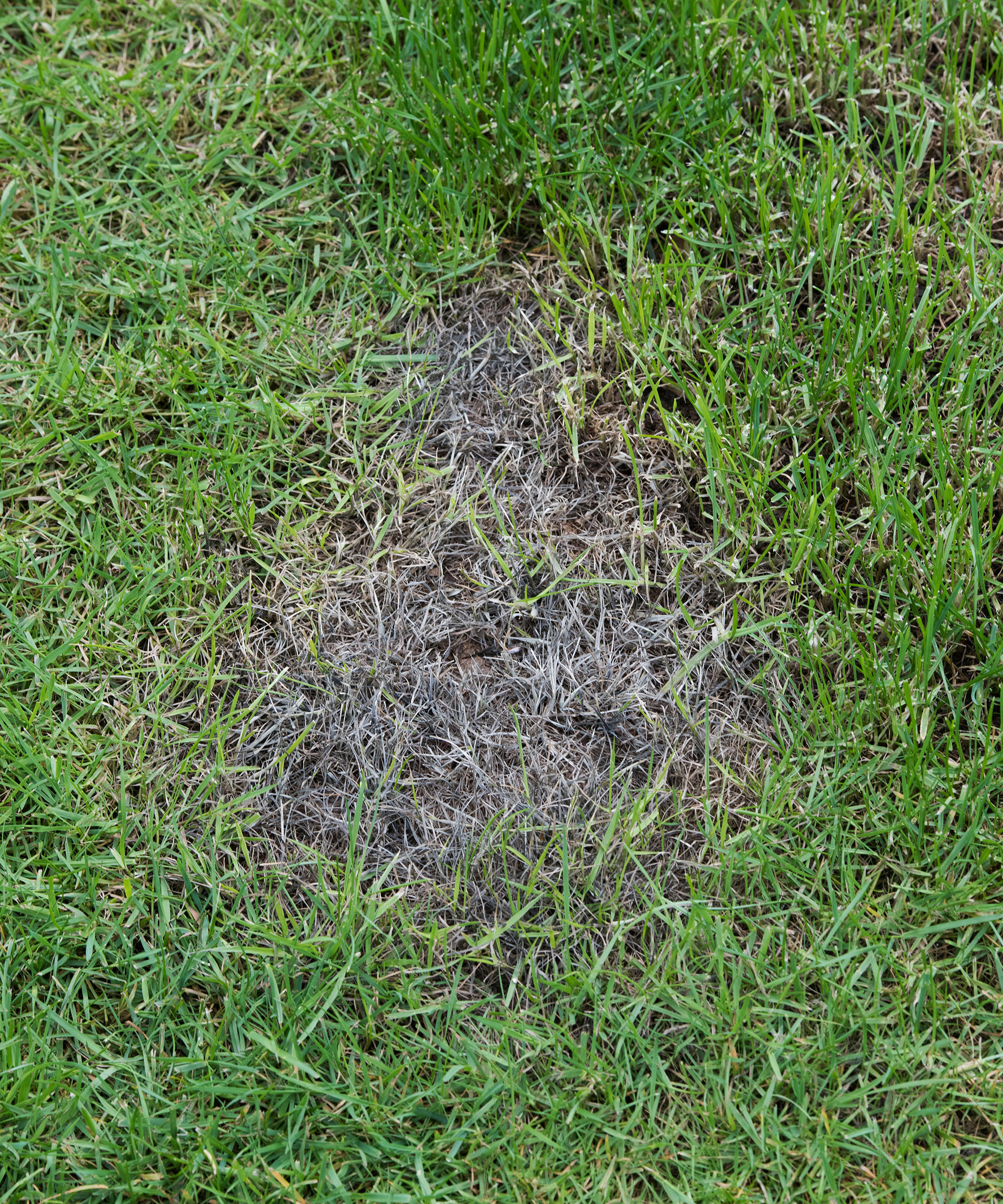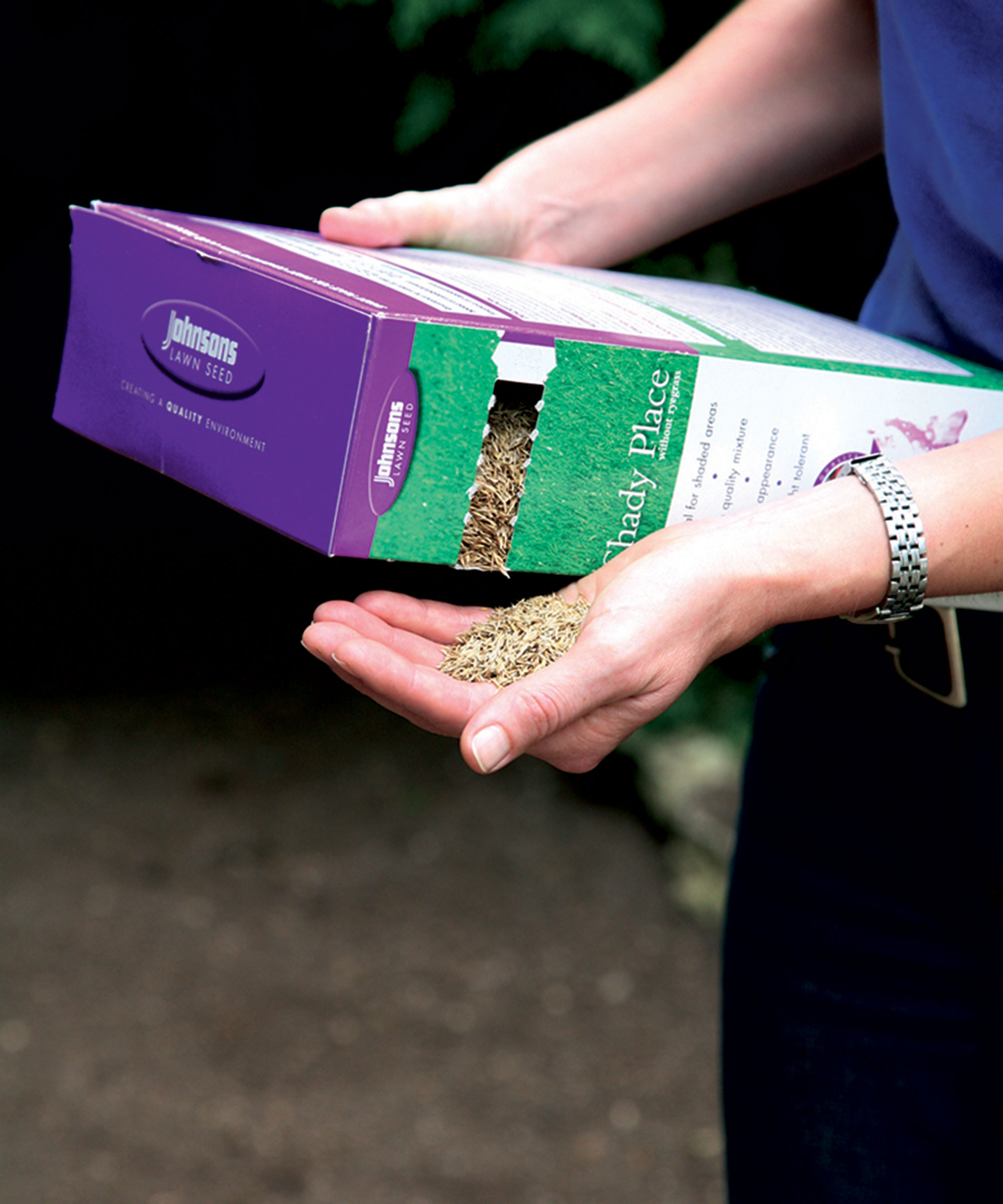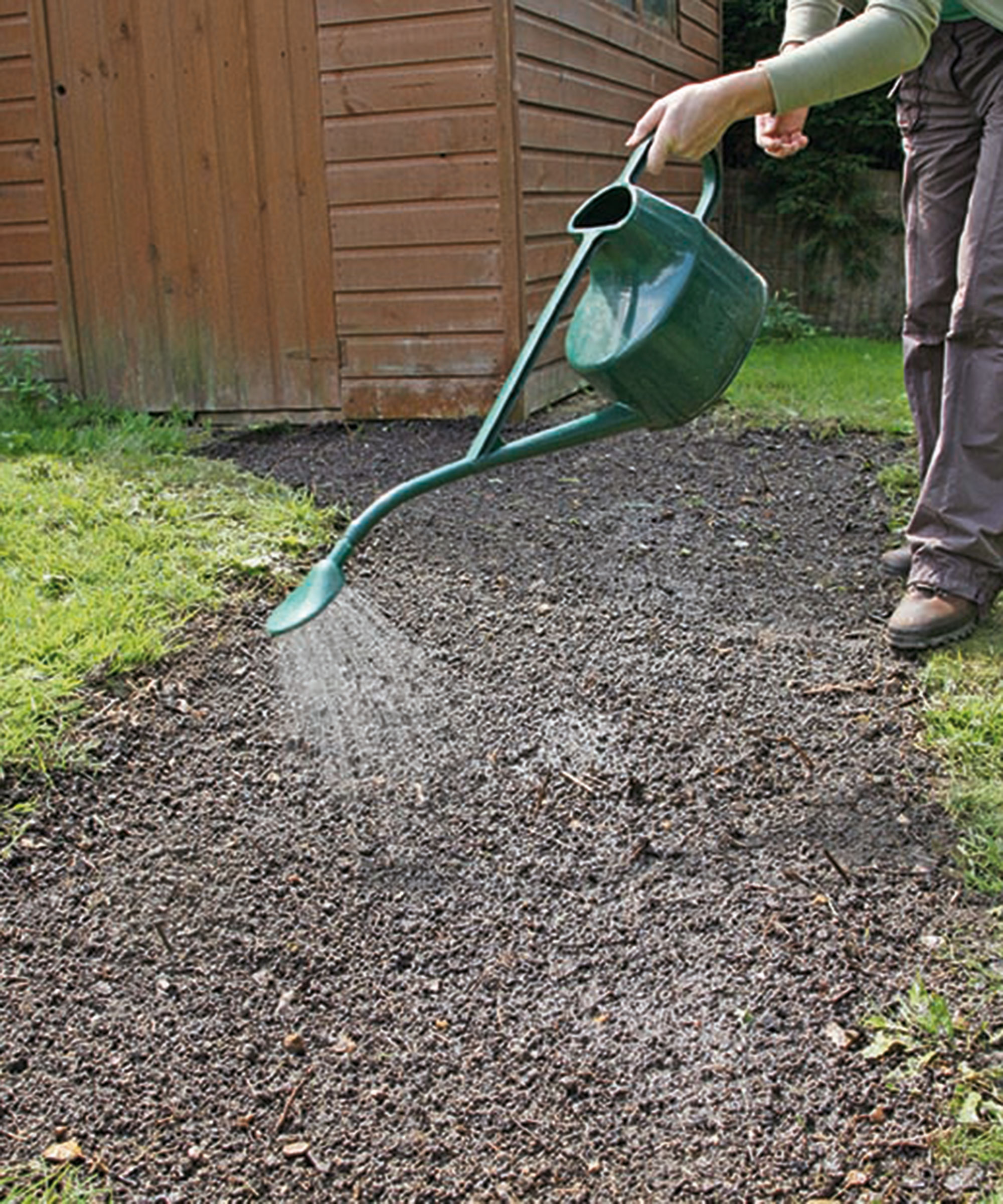Why is my grass seed growing patchy? Lawn care experts solve your dilemma
From poor seed sowing to lack of soil preparation, these are the most common reasons to look out for


Most of us long for a lush, uniform lawn but if you are dealing with sporadic lawn growth and sparse, bare patches it can be hugely frustrating.
Whether you've planted fast-growing grass seed for an entire new lawn, or have been overseeding a patch of existing lawn, there are a few factors that can contribute to grass seed growing patchy. Fortunately, most are easy to solve.
‘If you’re having trouble getting your grass seed to grow evenly, don’t worry – you’re not alone!’ says Susan Brandt, co-founder of Blooming Secrets. ‘Patchy grass growth is a common issue and is usually caused by inadequate soil preparation, poor seed selection, inaccurate planting, or maintenance practices. With the right steps in place, you can ensure that your grass seed will grow uniformly without any patchy spots.’
7 reasons why your grass seed is growing patchy
Although it's possible to repair patches in grass, it's always best to sow grass seed properly in the first place to give it the best chance of growing well.
With expert guidance, we can talk you through the most likely causes for your grass seed growing patchy, why it happens and how it can be rectified.

There a a number of common reasons that can lead to you having bare patches in a recently sown lawn
1. Poor soil preparation
Planting grass seed or laying sod is hard work and it can be tempting to cut corners when preparing the ground. Don’t! Any poorly dug over soil that has not been aerated, fed, watered and levelled will quickly show and can cause patchy growth that can take time, effort and patience to rectify.
If certain areas of soil are compacted, grass seed will struggle to put down roots and can fail to grow properly. In other areas that have been properly aerated grass will thrive and the overall end result can look curiously uneven.
Design expertise in your inbox – from inspiring decorating ideas and beautiful celebrity homes to practical gardening advice and shopping round-ups.
‘If your lawn is growing patchy grass, the most important thing to consider is the soil type,’ explains Robert Martinez, author at Yardenz. ‘Different grass types require different soil mediums to thrive, so it’s important to understand the soil composition before selecting the grass seed. Prepare the soil properly by testing the pH level and removing any weeds or rocks that may disrupt your seed’s germination process.’
A simple kit, like this Garden Tutor soil testing kit from Amazon, will help you determine what soil type you have.
2. Competing vegetation
Clearing the site thoroughly before sowing seed is another task that must be done properly, if you are to create a beautifully uniform lawn.
‘If there are other plants or weeds growing in the area, they may compete with the grass seed for resources and prevent even growth,' says Stacie Krljanovic, head groundkeeper in Houston, TX, and advisor to Patio Productions. 'Be sure to get rid of weeds or competing vegetation before seeding.’
3. Uneven seed sowing
Once the ground has been prepared, you may think sowing the grass seed is the quick and simple part; simply casually scatter a think covering of seed and you’re all set. Well, you can do this, but chances are the results will be hugely uneven, with both densely seeded patches and sparse areas that are mainly soil.
Cited by experts as one of the most common grass seed sowing mistakes gardeners make, it pays to take time to understand how to plant grass seed properly. ‘It could be that the seeding was not as uniform as it could have been,’ says Eric DeBoer, agronomist at Simple Lawn Solutions. ‘Seeding by making passes in multiple directions will avoid heavily and thinly seeded areas.’

Randomly scattering grass seed is likely to lead to patchy areas of growth
4. Seed stealers
There’s nothing quite as frustrating as prepping your new lawn, learning when to plant the grass seed at the correct time of year, and lavishing it with attention only to witness the seed being eaten or mysteriously disappearing overnight.
‘It's possible that you've had some avian visitors enjoying the smorgasbord of seed that you have laid out for them,’ says Eric DeBoer. ‘Covering your seed with germination blankets can be labor intensive but can be beneficial in the long run by keeping animals away.’
5. Variable weather
‘Weather conditions such as extreme temperatures, high winds, or heavy rain can all affect the growth of grass seed,’ says Stacie Krljanovic. Leading to patchy lawn growth they are best avoided where possible.
‘Try to seed during a period of mild weather with consistent moisture and moderate temperatures,' adds Stacie. 'By addressing these potential issues, you may be able to improve the evenness of your grass seed growth and achieve a thick, green lawn.’
6. Poor irrigation
Erratic watering and drainage issues can have a huge impact on grass seed growth, often resulting in varying patches. ‘Grass seed needs consistent moisture in order to germinate and grow,’ explains Stacie Krljanovic. ‘If the soil is too dry or too wet, the grass seed may struggle to grow evenly. Be sure to water the area regularly, keeping the soil moist but not waterlogged.’
Rhys Charles, CEO, Mower On the Lawn is in agreement. ‘A possibility is that the seed has not been kept moist enough and has dried out in some areas. Additionally, the soil in the patchy areas may not be as fertile as in other areas, preventing the grass seed from germinating properly.’
Once your grass seed has grown fully, knowing when to water grass to get the best results for the ongoing health and growth of your lawn is key too.

It's important to keep newly sown grass seed well watered to ensure even growth
7. Poor-quality seed
Grass seed grows best within a couple of years of it being harvested and processed. Every subsequent year after year two, success rate reduces by 30 per cent until after five years it is best discarded.
Like other seeds, grass needs to be stored in cool, dry environment out of direct sunlight. If any of these conditions are compromised it’s likely the seed will struggle or fail to grow, especially if the ground it falls on or the growing conditions are less than ideal.
To ensure reliable germination and growth always buy a fresh batch of seed. The harvest or packaging date is usually specified on the packaging. Sowing a test patch is often recommended too.
FAQs
Can a patchy lawn be caused by infection?
Yes, fungal diseases can be another cause of a lawn blighted by unsightly discolored patches. Often occurring in cooler season grasses, such as fescue, fungal infections can develop during warm, damp conditions and can spread pretty fast if not checked and treated.
Newly laid sod lawns are also susceptible to these infections as the stress of the harvesting process and relaying the turf, can result in fungal spores being disturbed and re-activated.
Dealing with any fungal grass infection is best left to the lawncare professionals. They will be able to identify the specific cause and administer a professional fungicide.
Will patchy grass fix itself?
Grass will, over time, spread to cover any small bare patches in a lawn but larger areas are best repaired by re-seeding or patching in new sod.
It's clear that putting in the correct preparation is key to giving your grass seed the best possible chance of growing well, without any unsightly bare patches. Whether you're overseeding or starting a new lawn from scratch, it certainly pays to put in the hard work at all stages of the process to be guaranteed a lush, green lawn.

Journalist Jill Morgan has spent over 20 years writing and editing gardening, interior and property features. Titles she has worked on include The English Home, House Beautiful, Ideal Home, Houzz and Modern Gardens and she writes regularly for H&G as a Contributing Editor. Whilst she is a dab hand at renovation projects and DIY, she is happiest when out digging in the garden or planning a new border.